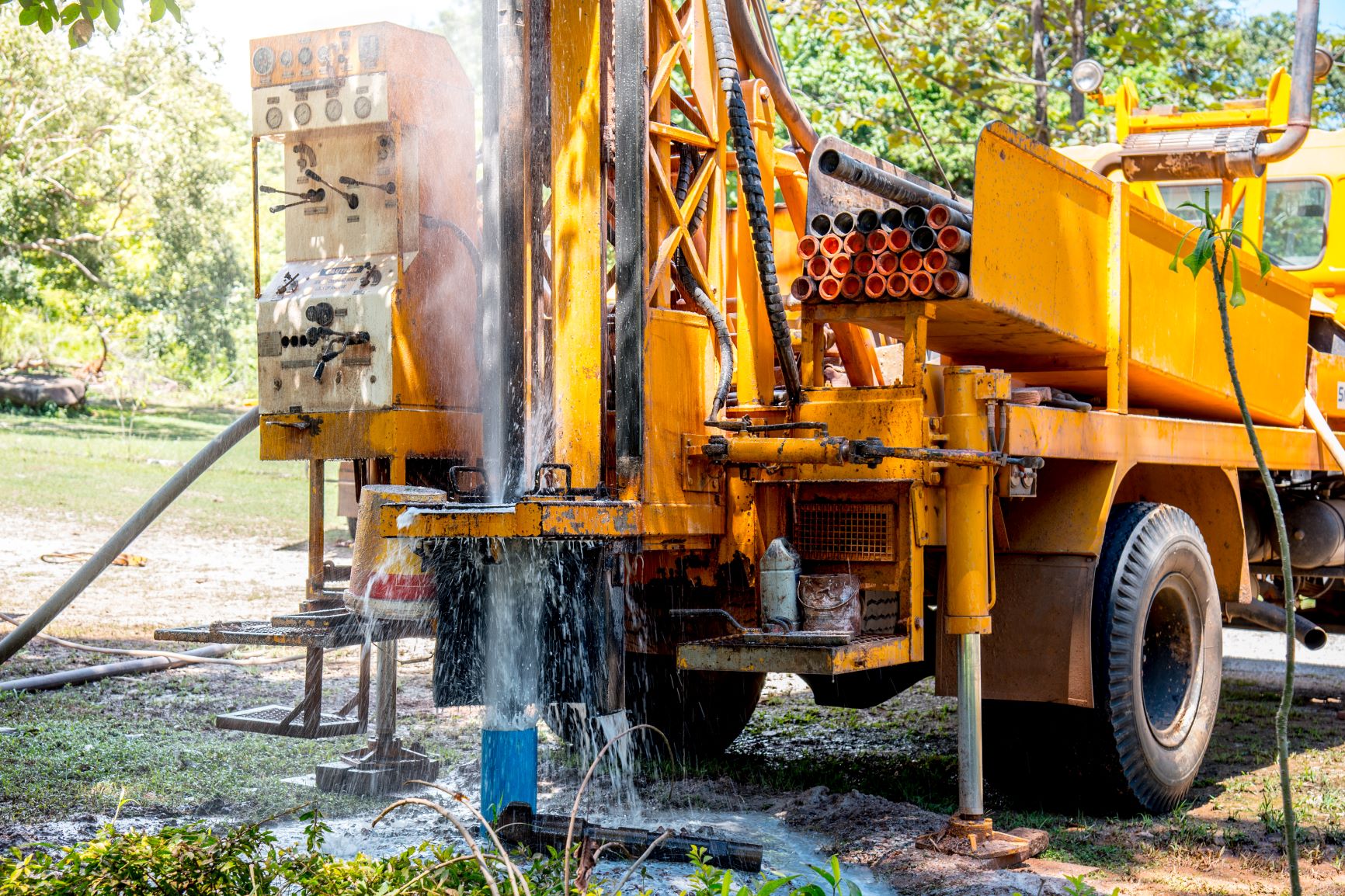
WHAT TO DO AFTER YOUR WELL CRISIS
WelGard® considers its members Family. These are important steps Families should take after a Well Repair Partner visits, to avoid any further issues or inconvenience.
Find your repair below then click on the three dots (...) to expand your aftercare details.
New wells require the most after-care. A new well goes thru a “settling/seasoning”. For the next 2 weeks limit all water usage to 1 household location at a time as the new well and its fractures are still fresh. The well has been chlorinated prior to sealing it.
- Your new well has been chlorinated prior to sealing. Restrict the use of water for 24 hours so that the chemicals inserted can evacuate any bacteria.
- Expect sediment in the water due to the disturbance to the material around your well borehole.
- By-pass all water treatment equipment until you observe clear water. This should take a few weeks. Re-connect only after the water is clear.
- Ensure that the well casing, above the ground is mounded, and water does not pool around the well head. If the ground around the hole settles, add dirt or grass to raise the area from the well 6 inches. This ensures water drains away from the well pipe.
- Check and clean your whole-house filter several times per day, especially after water use. Your whole-house filter is the first line of defense against any particulates entering your home plumbing system. Particulates may include, clay, iron, or sediment naturally occurring in the water feeding your well.
- If you do not have a whole-house filter, consider installing one. Without a whole-house filter you should double the frequency of all steps.
- Several times for the first 2 weeks, close the valve going to the whole-house. Attach a garden hose to the bottom of the pressure tank, then open the valve to expel the water for 15 to 30 minutes, to an outside area away from the house. This will flush unusual or excessive particulates that may be in the tank and pipes between the tank and the well. You will want to fill a bucket during this process to determine if particulates are observable. Repeat until the water is clear.
- We do NOT recommend expelling the water from the pressure tank to a nearby sump pit, as the excessive amount of water flow may exceed the capacity of the sump pump.
- If the pressure tank is not accessible or a garden hose cannot be secured to it and exit outside of the house, complete “Step F” using the same techniques to the nearest outside hose bib.
- After a few weeks of completing these steps, the well should be fine and ready for normal use. Depending on the yield and reserves, you should be able to extract 400 gallons of water every 2 hours over 24 hours. But always try to conserve water, and use your well at different times of the day.
- Clean out aerators and shower heads daily in case particulates were not trapped or flushed in the prior steps. Check water inlets for dishwashers and washing machines, and limit their use during this inspection period. Most likely reduced water pressure would come from sediment trapped in these fixtures. It may be a good time to replace these as well.
In this situation we had to remove the well cap to diagnose the problem. We removed and inserted or re-inserted parts. This increases the potential to introduce bacteria in your water. When this happens, we chlorinate the well to ensure that the bacteria do not survive for more than 24 hours. We will also complete an initial flush of the system.
- Pulling the pump and repairing or replacing parts down in the well will disturb the well. This agitates the water and increases sediment particulates in your water for a short period.
- Restrict your use of water for 24 hours so that chemicals inserted into the well can extinguish the bacteria.
- By-pass all water treatment equipment for up to one week by using existing or installed valves. Re-connect only after you observe clear water.
- Check and clean your whole-house filter several times per day, especially after water use. Your whole-house filter is the first line of defense against any particulates entering your home plumbing system. Particulates may include, clay, iron, or sediment naturally occurring in the water feeding your well.
- If you do not have a whole-house filter, consider installing one. Without a whole-house filter you should double the frequency of all steps.
- Every other day during week 1, close the valve going to the whole-house. Attach a garden hose to the bottom of the pressure tank, then open the valve to expel the water for 15 to 30 minutes, to an outside area away from the house. This will flush unusual or excessive particulates that may be in the tank and pipes between the tank and the well. You will want to fill a bucket during this process to determine if particulates are observable. Repeat until the water is clear.
- We do NOT recommend expelling the water from the pressure tank to a nearby sump pit, as the excessive amount of water flow may exceed the capacity of the sump pump.
- If the pressure tank is not accessible or a garden hose cannot be secured to it and exit outside of the house, complete “Step E” using the same techniques to the nearest outside hose bib.
- After 1 week of completing these steps, the well should be ready for normal use.
- Clean out aerators and shower heads daily in case particulates were not trapped or flushed in the prior steps. Check water inlets for dishwashers and washing machines, and limit their use during this inspection period. Most likely reduced water pressure would come from sediment trapped in these fixtures. It may be a good time to replace these as well.
This involves digging around or near the well borehole to replace defective below grade parts, or repair pipes that have fractured. This increases the potential to introduce bacteria in your water. When this happens, we chlorinate the well to ensure that the bacteria do not survive for more than 24 hours. We will also complete an initial flush of the system.
- While the well itself has not been disturbed, these repairs allow for the occurrence of both bacteria and sediment particulates.
- Restrict your use of water for 24 hours so that chemicals inserted into the well can extinguish the bacteria.
- By-pass all water treatment equipment for up to three days by using existing or installed valves. Re-connect only after you observe clear water.
- Check and clean your whole-house filter several times per day, especially after water use. Your whole-house filter is the first line of defense against any particulates entering your home plumbing system. Particulates may include, clay, iron, or sediment naturally occurring in the water feeding your well.
- If you do not have a whole-house filter, consider installing one. Without a whole-house filter you should double the frequency of all steps.
- Every other day, close the valve going to the whole-house. Attach a garden hose to the bottom of the pressure tank, then open the valve to expel the water for 15 to 30 minutes, to an outside area away from the house. This will flush unusual or excessive particulates that may be in the tank and pipes between the tank and the well. You will want to fill a bucket during this process to determine if particulates are observable. Repeat until the water is clear.
- We do NOT recommend expelling the water from the pressure tank to a nearby sump pit, as the excessive amount of water flow may exceed the capacity of the sump pump.
- If the pressure tank is not accessible or a garden hose cannot be secured to it and exit outside of the house, complete “Step E” using the same techniques to the nearest outside hose bib.
- After 1 week of completing these steps, the well should be ready for normal use.
- Clean out aerators and shower heads daily in case particulates were not trapped or flushed in the prior steps. Check water inlets for dishwashers and washing machines, and limit their use during this inspection period. Most likely reduced water pressure would come from sediment trapped in these fixtures. It may be a good time to replace these as well.
These are intrusive repairs which don’t seem to be disruptive but still may cause increased sedimentation concerns or change in water quality. These should only be completed if you detect a change in water quality. This should be temporary, although the source of you water changes often, thereby changing the characteristics of the water composition.
- The tank “Tee”, or other piping, are new and have zero particulates that will absorb into the water. But the repair may have disturbed the existing pipes nearest to the parts replaced. There is a chance this sediment may affect your water. Look for change in your water quality.
- Check and clean your whole-house filter several times per day, especially after water use. Your whole-house filter is the first line of defense against any particulates entering your home plumbing system. Particulates may include, clay, iron, or sediment naturally occurring in the water feeding your well.
- If you do not have a whole-house filter, consider installing one. Without a whole-house filter you should double the frequency of all steps.
- By-pass all water treatment equipment for 1 to 2 days by using existing or installed valves. Re-connect only after you observe clear water.
- 12 to 24 hours after repair, close the valve going to the whole-house. Attach a garden hose to the bottom of the pressure tank, then open the valve to expel the water for 15 to 30 minutes, to an outside area away from the house. This will flush unusual or excessive particulates that may be in the tank and pipes between the tank and the well. You will want to fill a bucket during this process to determine if particulates are observable. Repeat until the water is clear.
- We do NOT recommend expelling the water from the pressure tank to a nearby sump pit, as the excessive amount of water flow may exceed the capacity of the sump pump.
- If the pressure tank is not accessible or a garden hose cannot be secured to it and exit outside of the house, complete “Step D” using the same techniques to the nearest outside hose bib.
- 1 to 2 days after completing these steps, the well should be ready for normal use.
- Clean out aerators and shower heads daily in case particulates were not trapped or flushed in the prior steps. Check water inlets for dishwashers and washing machines, and limit their use during this inspection period. Most likely reduced water pressure would come from sediment trapped in these fixtures. It may be a good time to replace these as well.
Opening the well may, but very likely WILL NOT, expose the well to bacteria. We take great care not to introduce bacteria and may have even applied a mild chlorination technique that you will not necessarily notice.
- Under these circumstances, the only step is to observe. Look for loose well cap, non-vermin-proof well cap, deteriorated or perforated casing, etc. Such events would likely impact your water.
- If you are concerned, we can conduct a potability test to determine the absence or presence of bacteria (at an additional cost). If bacteria is detected, the remedy is to chlorinate the well (at an additional cost).
- Wells become contaminated for unknown reasons. The cause is most likely NOT the opening of the well cap for inspection.
These other repairs RARELY impact your water quality. Nor do these repairs result in excessive sediment, that is not otherwise naturally occurring in your well,
- Feel free to contact WelGard® with any questions or concerns after any repair or inspection.
- Failure to address observed or uncontrolled sediment can shorten the life of plumbing fixtures. This sediment can reduce water pressure at your faucet, shower, or outlet. Uncontrolled sediment can shorten the life of the well equipment.
When the well cap is removed and the well is disturbed, for whatever reason, it is prudent to assume that this process will cause the sediment at the bottom of the well to mix with the well water, resulting in cloudiness or discoloration, or even worse, sediment moving from the well into your home’s plumbing system. In virtually all instances when the well has been opened, the well service professional will insert into the well a chlorinating agent to prevent the introduction of coliform or other potentially harmful bacteria. In the event of a chlorination, we have issued a set of procedures to guide homeowners following a chlorination,
To guard against this situation from becoming a serious problem with your system, we strongly recommend that you take the following precautions:
- Following the closing of the well cap, identify an outside hose bib to periodically flush the piping from the well to your home. We recommend attaching a hose to the hose bib, and running your water for 10 minute intervals every few hours for at least 24 hours.
- If you are unable to use an outside hose bib for this procedure, you need to close the valve leading from the pressure tank into the plumbing system, then attach a hose to the faucet located at the bottom of the pressure tank to flush your well water as described above.
- These procedures can be combined with the flushing suggestions made in the chlorination procedures referenced to above.
- To guard against unexpected sediment problems, many homeowners have installed whole-house sediment filters, which are designed to keep your plumbing system clear of sediment, sand, etc.

Disclaimer: This is a General Guide and should be used for reference only. In the event of excessive or dramatic after-affects, we recommend you call WelGard® so that we can visit and conduct a hands-on investigation of the possible causes of any water quality issues.
